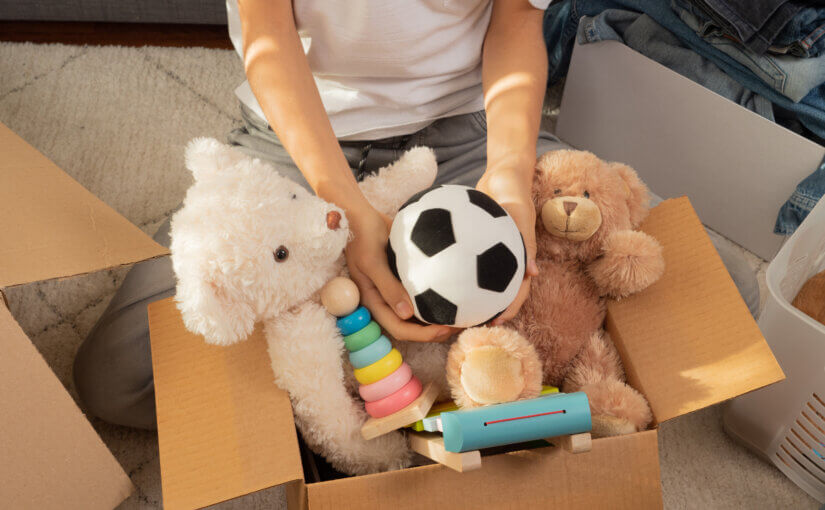Clutter can consume your daily life, and decluttering can often feel overwhelming — whether the junk’s in one room or has taken over your entire house.
However, you’re not alone — 90% of the UK public has clutter in their home, and reducing it is more critical than ever.
Clutter impacts your physical space but can also affect your mental health. A shocking 47.2% of people reported feeling stressed and swamped by a disordered property.
Likewise, jumble leads to conflict between household members in 80% of the country’s houses.
It can be tempting to delay decluttering, but this can lead to further problems like the misplacement of essential things like keys.
Let’s dive into four vital decluttering tips to get you started on the road to an organised, junk-free home.
Step one: Create an action plan
Whether you live in a small or large property, decluttering is much easier when you create and follow an action plan.
Breaking the task down into steps provides direction and a framework for efficiently getting the job done.
Start by writing a list of every room that needs tackling. Once you’ve listed the rooms, give them each a score out of 10 based on how cluttered they are — the room with the highest score is your starting point.
The good news is that once you’ve cleared the bulk of the clutter from a room, the remainder will feel much more straightforward to remove.
Focus on one room at a time and set a timer or deadline to help you stay focused and motivated.
If you’re having a clear-out with a roommate or partner, you could turn this into a fun competition — pick a room each to work on and see who can finish first.
Clearing out rooms in your home is usually best done over the weekend — or several weekends — depending on your availability and how much work needs doing.
Step two: Implement a sorting system
A sorting system is crucial when decluttering to ensure you stay organised.
As you sort through your belongings, categorise each item and place them in a designated spot. Labelling three large boxes as ‘keep’, ‘get rid’, and ‘storage’ is helpful.
Once you’ve completed a room, sort through the ‘get rid’ box and filter it all again — some items will be for the bin, and some could be donated, reused, or recycled.
Hiring a skip is the easiest option for domestic clear-outs — and if you hire a skip from us, we’ll organise and recycle the waste for you. All you need to do is fill in your skip, and we’ll take care of the rest.
Other waste disposal methods are available, and you may wonder if you should hire a skip or visit the tip. We recommend researching your waste disposal options before starting the project.
When disposing of your household junk, avoid making waste disposal mistakes and follow responsible practices.
Step three: Prepare to say goodbye
Junk builds up in the home when items you intend to use at a later date sit unused, taking up precious storage space.
When having a clear-out, most things need to be thrown out, so sometimes, it helps to prepare yourself to say goodbye.
For instance, those teddies you haven’t touched in years are now dust collectors, and it’s probably time to part company.
The key here is to be strict. If you decide to declutter and throw nothing away, you’re not decluttering.
When sorting through your belongings, ask yourself the following three questions:
- Do I use it?
- Do I need it?
- Do I like it? If I do like it, do I need it in my house? Could I take a photograph of it instead, as a memory?
This also applies to unwanted gifts and sentimental things you feel should be kept but you can’t explain why — for example, an 18th birthday sash when you’re in your 40s.
Sentimental things are tempting to keep hold of, but you must ask yourself how valuable they are.
Step four: Organise as you declutter
Ensure you’re organising as you declutter, or you’ll create more chaos.
Large pieces of furniture like a sofa or bed will likely be kept, so if you’re happy with their current positions, leave them where they are.
If you want a significant change, consider moving them around after decluttering. This could transform your space entirely and give your home the refresh it needs.
The critical thing to remember is that everything you’ve put into your ‘keep’ box or pile can be organised after you’ve moved the big things.
Declutter and organise complete
Finally, you’ve completed one room, and it looks and feels like a brand-new space — all your clutter is gone, and you can enjoy the extra room and storage space.
Decluttering your home can feel very satisfying, but it’s hard work. There are some tips you can follow to avoid having to repeat the process.
If you buy a lot of something — clothing, for instance — stick to the ‘one in, one out’ rule. This means every time you buy a new piece of clothing, you must discard an old one.
Staying organised also helps greatly, so invest in furniture for storage. If your wardrobe, drawers or shelving become full, you know it’s time for a sort-out.
If you stick to these rules, your property should remain a spacious place to rest and relax without fear of being overwhelmed or the need to organise a massive clear-out.
